Explore Tulsi Ghat To Dive Into The Serenity Of Varanasi
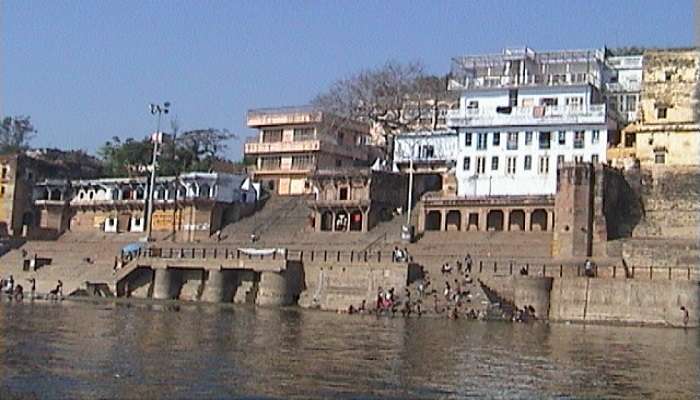
Located along the banks of the sacred river, the Ganges, at the religious city of Varanasi, Tulsi Ghat is a perfect example of India’s diverse cultural and spiritual history. This ghat is named after the great poet-saint Tulsidas and has many historical and mythological associations and religious importance. Goswami Tulsi das was a saint-poet who was famous for the Ramcharitmanas and the Hanuman Chalisa, so Tulsi Ghat attracted a lot of pilgrims and tourists. In this blog, all aspects of Tulsi Ghat are covered to help those who are planning to visit the place.
History Of Tulsi Ghat
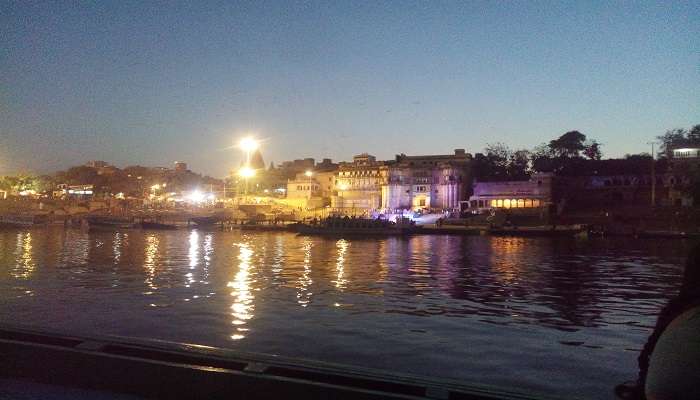
Tulsi Ghat is located in Varanasi and is named after the 16th-century poet-saint Tulsidas, who was popular for writing Ramcharitmanas, an Awadhi interpretation of the Ramayana. Formerly known as Lolark Ghat, it was renamed after the saint-poet Tulsidas, who resided and meditated here when composing his Ramcharitmanas. Composed in the Awadhi language, this work provided an understanding of the Ramayana to the local masses and is considered sacred in Hinduism.
Famous legend states that the Ramcharitmanas manuscript was once dropped in the Ganges and floated as a sign of approval from the gods. Maharani Ahilyabai Holkar in the 18th century and industrialist Baldeo Das Birla in 1941 helped modify the ghat physically, thus enhancing its accessibility and durability. At the ghat, there are exhibits such as wooden clogs, a pillow, and a manuscript of Ramcharitmanas, which belonged to Tulsidas. Also, a temple of Lord Rama was established to mark Tulsidas’s association with the place. The Tulsi Ghat has a gymnasium constructed by Tulsidas, which combines exercise with spiritual wellness.
Must Read: Things To Do In Varanasi
Cultural And religious significance
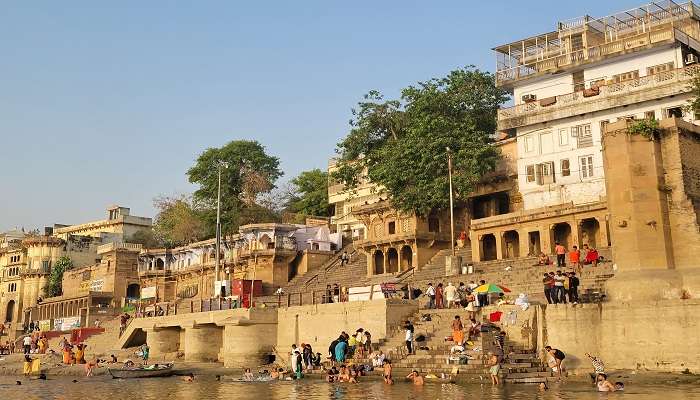
Tulsi Ghat is culturally and religiously rich. It is said that Tulsidas used to write the Ramcharit Manas here itself ,after being inspired by certain visions of Lord Rama . The ghat witnessed the first Ram Lila, a dramatic representation of the life of Lord Rama-a festival which is celebrated in most places during Diwali.
Tulsi Ghat has several important rituals and vibrant occasions taking place at its premises. Lolark Sasthi is an important festival celebrated annually and dedicated to the birth and prosperity of sons. It is when devotees flock to the Lolark Kund, a sacred water tank beside the ghat. This festival is celebrated on the sixth day of the bright half of the Bhadrapada month in Hindu calendar. In the Hindu lunar month of Kartika (mid-October to mid-November), the ghat becomes the venue for Krishna Lila, particularly the Nag Nathaiya festival, when the drama of Krishna’s triumph over the serpent Kaliya is performed. These celebrations are usually attended by thousands of people and help enhance the ghat’s reputation as one of the cultural landmarks.
Tourist Activities At Tulsi Ghat
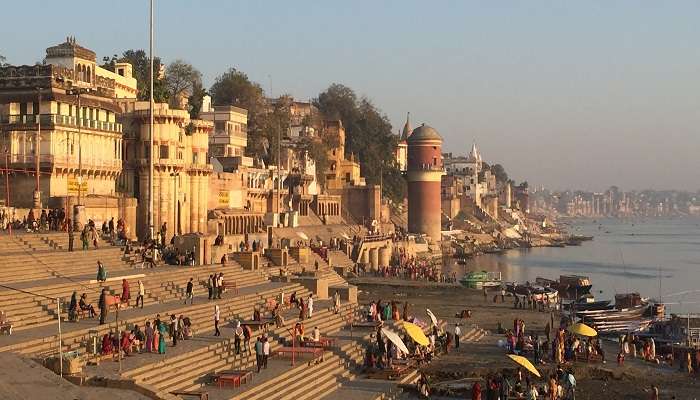
Tulsi Ghat is situated in Varanasi, which is one of the sacred cities of India, and provides the travelers and pilgrims with spiritual, historical, and recreational opportunities.
- Visit the Temple of Lord Rama-Tulsi Manas Mandir: This temple is associated with Lord Rama and was built to honor Tulsidas, who was extremely devoted to Lord Ram. It is the most religiously significant destination for believers and tourists. Pray, meditate and participate in daily aarti (worship).
- Explore Tulsidas’ Relics: Tulsi Ghat houses many items related to Tulsidas, such as his wooden slippers, pillow, and a copy of Ramcharitmanas. Get a chance to see these holy relics and acquire knowledge about Tulsidas’s life and work.
- Attend Cultural Performances: Get a chance to observe the classic performance depicting Lord Rama’s life which used to be performed here more notably during Diwali. A popular cultural event related to Krishna is celebrated during the Hindu lunar month of Kartika as a reenactment of Krishna’s triumph over Kaliya, the serpent. Organized annually in March at Tulsi Ghat, this festival is dedicated to North Indian classical music and hosts musicians from different parts of India.
- Participate in Festivals: This festival is related to the birth and welfare of sons and numerous devotees visit Lolark Kund, which is a water tank located near to the ghat. Participate in other forms of religious events that are commonly held on different occasions.
- Perform Rituals: Take a ceremonial bath in the sacred river of India – Ganges, which cleanses not only the body but also the soul.Participate in fire ceremony and offerings at the ghat with the help of local Brahmins.
- Experience Spirituality: Practice meditation and yoga on the riverside, which can be done with the help of local instructors. Just spend time sitting alongside the river and meditate, enjoying the serenity and religious atmosphere of the ghat.
- Visit the Lolark Kund: This is an ancient water tank which is believed to have a religious significance particularly in worship relating to progeny and health. Pray or simply watch the religious activities that are conducted in this holy place.
- Watch Sunrise and Sunset: The ghats of Varanasi are famous for its beautiful sunrises and sunsets. If you are in Varanasi start your day by watching the rising sun or end the day watching the sunset over the Ganges.
- Interact with Local Sadhus (Holy Men): It is easy to meet sadhus in Varanasi, and engaging them in conversation may help understand Hindu spirituality and the life of an ascetic. You can actually speak to them, ask for their blessings or just watch them go about their daily activities.
- Traditional Exercise at the Gymnasium: Tulsidas founded this gymnasium to encourage the use of traditional Indian ways to build physiques. Observe or engage in conventional exercises, such as wrestling drills.
- Boat Ride on the Ganges: Boat rides offer a stunning view of the ghats of Varanasi and it is a very calm and easy way to enjoy the river. Hire a boat in the morning or in the evening when the water is calm and enjoy the experience. Tulsi Ghat is an ideal place to explore for anyone interested in the spiritual and cultural essence of Varanasi as the place has a lot to offer.
Suggested Read: Places To Visit In Varanasi
Accommodations Near Tulsi Ghat

1. Wyndham Ramada Varanasi Katesar: A plush hotel with modern comforts and varied accommodation choices near the ghat.
2. Hotel Dolphin Grand: It is a mid-range hotel with fairly good amenities and in close proximity to Tulsi Ghat.
3. Amritara Suryauday Haveli: A heritage property where tourists get to experience the traditional way of living with a view of the Ganges.
4. Hotel Dolphin International: It is a good hotel offering pleasant lodging and a strategic location.
Best Time To Visit Tulsi Ghat
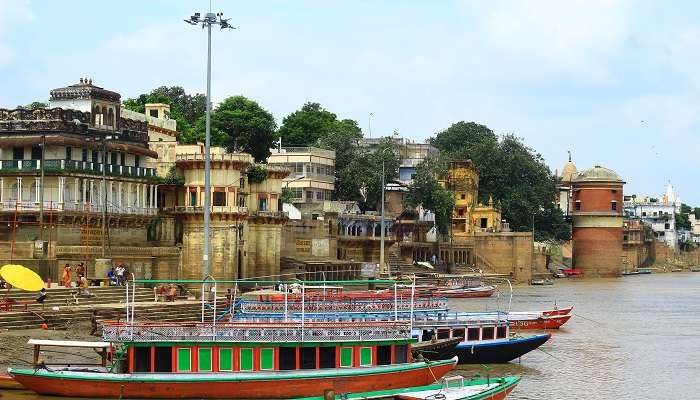
The best time to visit Tulsi Ghat is during the Kartika month (October November) when the climate is favourable for tourism and several festivals, including Krishna Lila, are celebrated. Another important festival is the Lolark Sasthi which is celebrated in the month of Bhadrapada (August-September). It is convenient to visit during these times to appreciate the cultural and religious displays that Tulsi Ghat is famous for.
The Ganga Aarti at Tulsi Ghat is not as colorful as at Dashashwamedh Ghat, but is peaceful and less crowded. In the summer months from March to October, the morning Aarti commences anytime between 5:00 AM and 6:50 AM, and in the evening the Aarti starts between 5:30 PM and 7:00 PM. During the winter months, the morning Aarti begins at around 6:30 AM and 7:00 AM while the evening Aarti starts between 5:00 PM and 5:30 PM. It is a devotional ritual where one can hear chanting, lamp lighting, and prayers directed to the river Ganga.
Suggested Read: Kashi Vishwanath Temple
Tips For Travelers
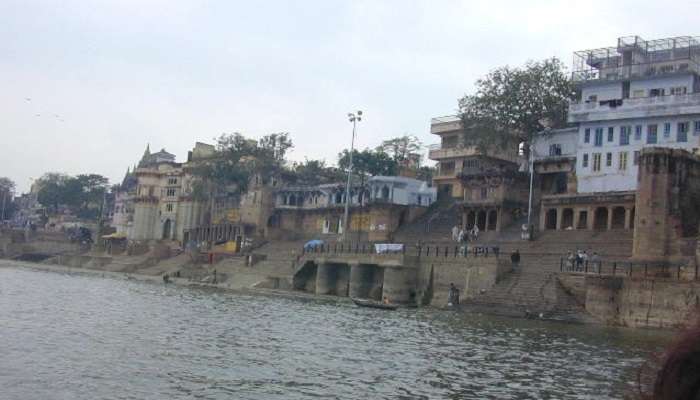
Dress Modestly: When touring through the ghats and temples, one has to respect the traditions and wear appropriate clothes.
Respect Local Customs: Make sure you do not offend the performers of the rituals and ceremonies being done. Do not act in a way that may be considered rude.
Stay Hydrated: Varanasi’s climate, like most other Indian cities, is hot or even really hot in summer. Bring water and stay hydrated.
Hire a Guide: If you want to dive deeper into Tulsi Ghat’s history and importance, it may be helpful to arrange a tour with a knowledgeable guide.
Keep Valuables Safe: The ghats are often packed with people, so they should be careful with their belongings.
How To Reach

By Air: The nearest airport is the Lal Bahadur Shastri International Airport, which is located around 25 kilometers away from the city of Varanasi.
By Rail: The nearest railway station to the destination is Varanasi Junction Railway Station which is approximately 8 km away from the Tulsi Ghat.
By Road: Tulsi Ghat is easily approachable by road and one can hire an auto-rickshaw, cycle-rickshaw or taxi to reach here.
Further Read: Varanasi Festivals
A trip to Varanasi is definitely incomplete without one visiting Tulsi Ghat. Tulsi Ghat is no ordinary religious site; it is more like a treasure chest from Varanasi’s cultural and historical perspective. Tulsi Ghat is a place that will be of interest to anyone, be it a traveller who is interested in spirituality or history or just a random tourist interested in sightseeing. From the vibrant festivals and fairs that are often celebrated there to the serene environment of the place, a visit to Tulsi Ghat is an unforgettable experience.
For our editorial codes of conduct and copyright disclaimer, please click here.
Cover Image Credit: Vrinda for Wikimedia Commons
Frequently Asked Questions About Tulsi Ghat
What is the historical background of this Tulsi Ghat?
Tulsi Ghat has derived its name from the poet-saint Tulsidas, the author of Ramacharitmanas. It was anciently called Lolark Ghat and has important historical and religious connection with Tulsidas and many other Hindu customs and practices.
What can I see at Tulsi Ghat that is connected with Tulsidas?
Several of the places are associated with Tulsidas and the items one can see here include wooden clogs, his pillow and a manuscript of Ramcharitmanas. These are relics that are associated with the prestigious poet-saint.
Which cultural performances can I expect to see at Tulsi Ghat?
Tulsi Ghat presents the drama Ram Lila based on the life of Lord Rama and the Nag Nathaiya festival that portrays the triumph of Lord Krishna over the serpent Kaliya. These performances draw big audiences and are much more lively during Diwali and the Hindu month of Kartika.
What major festivals are observed in Tulsi Ghat?
Tulsi Ghat is one of the main attractions where many festivals like Lolark Sasthi, which is the festival related to birth and prosperity of sons, is celebrated. This festival, like many other religious festivals, attracts a lot of people, including believers and spectators.
What other things can one do at Tulsi Ghat?
In addition to watching cultural programs and festivities, tourists can bathe in the Ganges, do yoga and meditation, take boat tours, and engage in a conversation with the holy men. There is also a gymnasium installed by Tulsidas where people can try out local exercises.
People Also Read:
Best Resorts In Varanasi Homestays In Varanasi Shopping In Varanasi

Innovative Content Writer Focused on Producing High quality, Original Content that drives traffic and engages readers. Experienced in Content strategy and analytics to measure content performance using tools such as SQL, Power BI, Excel.











